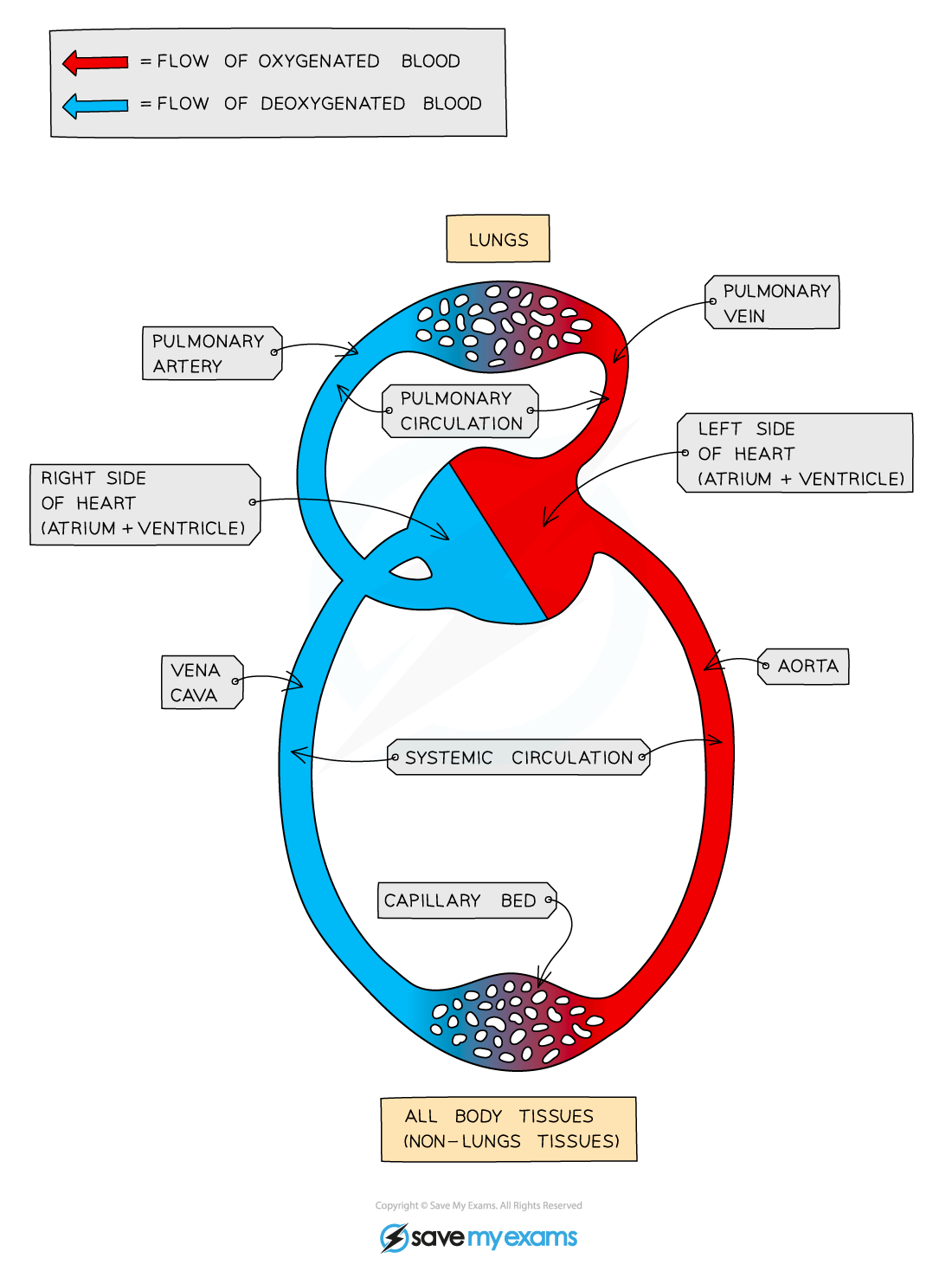Circulatory Systems (Cambridge (CIE) AS Biology): Revision Note
Exam code: 9700
Closed double circulatory system
The need for a circulatory system
The cells of all living organisms need a constant supply of reactants for metabolism, e.g. oxygen and glucose
Single celled organisms can gain oxygen and glucose directly from their surroundings
The molecules can diffuse to all parts of the cell quickly due to short diffusion distances
Larger organisms, however, are made up of many layers of cells
This means that the time taken for substances such as glucose and oxygen to diffuse to every cell in the body would be far too long
The diffusion distances involved are too great
To solve this problem their exchange surfaces are connected to a mass transport system, for example
The digestive system is connected to the circulatory system
The lungs are connected to the circulatory system
Mass transport is the bulk movement of gases or liquids in one direction, usually via a system of vessels and tubes
The circulatory system in mammals is a well-studied example of a mass transport system
The one-way flow of blood within the blood vessels carries essential nutrients and gases to all the cells of the body
Open and closed systems
Circulatory systems are either described as being open or closed
In a closed circulatory system, blood is pumped around the body and is always contained within a network of blood vessels
All vertebrates and many invertebrates have closed circulatory systems
In an open circulatory system, blood is not contained within blood vessels but is pumped directly into body cavities
Organisms such as arthropods and molluscs have open circulatory systems
Humans have a closed double circulatory system:
In one complete circuit of the body blood passes through the heart (the pump) twice
The right side of the heart pumps deoxygenated blood to the lungs for gas exchange
This is the pulmonary circulatory system
Blood then returns to the left side of the heart, so that oxygenated blood can be pumped efficiently (at high pressure) around the body
This is the systemic circulatory system

Structure | Function |
|---|---|
Heart | A hollow, muscular organ located in the chest cavity which pumps blood. Cardiac muscle tissue is specialised for repeated involuntary contraction without rest. |
Arteries | Blood vessels which carry blood away from the heart. The walls of the arteries contain lots of muscle and elastic tissue and a narrow lumen, to maintain high blood pressure. |
Arterioles | Small arteries which branch from larger arteries and connect to capillaries. |
Capillaries | Tiny blood vessels which connect arterioles and venules. Their size means they pass directly past cells and tissues and perform gas exchange and exchange of substances such as glucose. |
Venules | Small veins which join capillaries to larger veins. |
Veins | Blood vessels which carry blood back towards the heart. The walls of veins are thin in comparison to arteries, having less muscle and elastic tissue but a wider lumen. Valves help maintain blood flow back towards the heart. |
Examiner Tips and Tricks
Make sure you study any circulatory diagrams in the exam carefully to distinguish between single and double circulatory systems.

Unlock more, it's free!
Did this page help you?